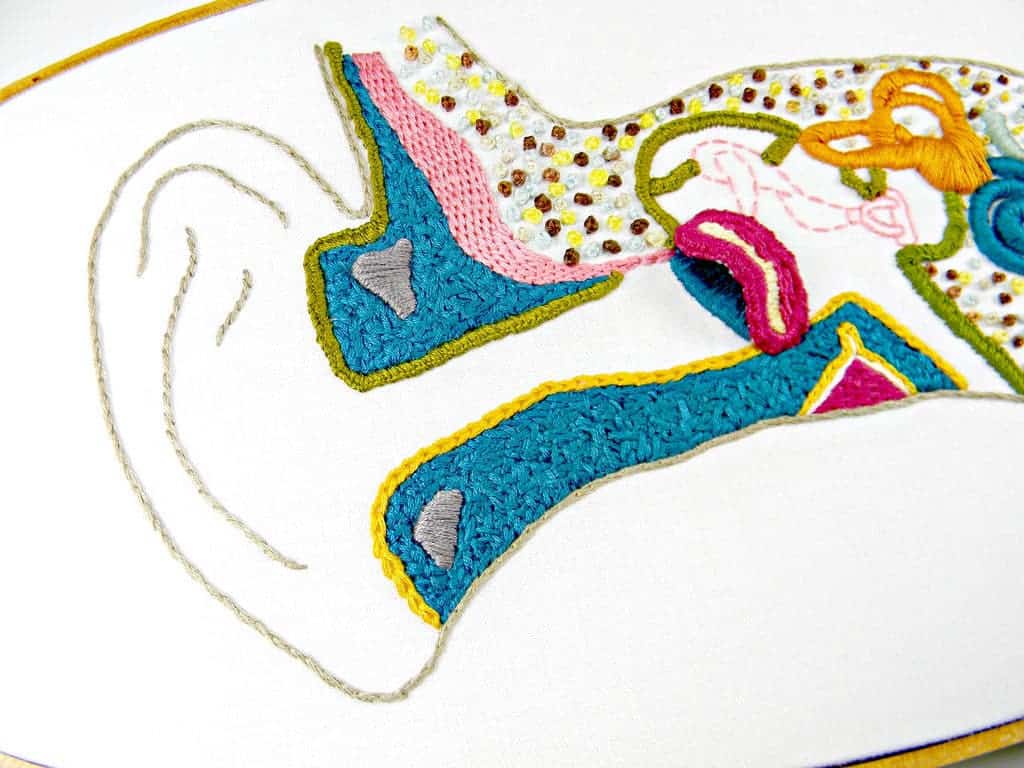Researchers have pinpointed the protein that turns sound and head movement into nerve signals for the brain.

Image credits Hey Paul Studios.
A team from the Harvard Medical School believe they’ve ended a 40-year-long search for the protein that allows us to hear and stay upright. Nestled in the inner year, this molecule turns sound and movements of the head into electrical signals — it is, in effect, what translates them into a language our brain can understand.
Ear-round signaling
The team points to TMC1 (Transmembrane channel-like protein 1), a protein discovered in 2002, as being the elusive molecule researchers have been looking for. TMC1 folds in on itself in such a way as to form a sound-and-motion-activated pore. In effect, it acts much like a microphone: the protein turns pressure waves into electronic signals, a process known as ‘auditory transduction’. These are then fed to the brain, where they’re recreated into sound and help us maintain balance.
The findings come to fill in a gap in our understanding of how hair cells in the inner ear convert sound and movement into signals for the nervous system.
“The search for this sensor protein has led to numerous dead ends, but we think this discovery ends the quest,” said David Corey, Bertarelli Professor of Translational Medical Science at Harvard and co-senior author on the study.
“It is, indeed, the gatekeeper of hearing,” says co-senior author Jeffrey Holt, a Harvard Medical School professor of otolaryngology and neurology at Boston Children’s Hospital.
The team hopes that their findings can lead to precision-targeted therapy for hearing loss associated with malformed or missing TMC1 proteins.
Hearing is one of the very few senses whose molecular converters remained unknown. This was, in part, due to the position of the inner ear. Nestled in the skull, the densest bone in the body, this organ is hard to reach. To further complicate matters, it also houses relatively few sensory cells that can be retrieved, dissected, and imaged. Our inner ear houses roughly 16,000 auditory cells — a human retina, by contrast, boasts over a hundred million sensory cells.
The team’s research was based on the discovery of the TMC1 gene in 2002. Back in 2011, a team led by Holt proved that TMC1 was required for transduction, but whether it was is a key player or just a supporting actor in the process. So, naturally, it sparked a heated debate among researchers.
Step-by-step process
The current paper aimed to put this debate to rest. In an initial set of experiments, the team found that TCM1 proteins clump together in pairs to form ion channels (basically pores). It was quite a surprising discovery, as most ion channels are built from three to seven proteins, the team explains. However, this unusual pairing also helped the researchers make sense the protein’s structure.
The second step was to map out the protein’s 3D structure. Computer predictive modeling, a process that works by predicting the most probable arrangement of a protein’s atoms based on comparisons with similar proteins with known structures, was used. This approach is based on the fact that a protein’s functions are dictated by its structure, i.e. its specific arrangement of amino acids.
The algorithm revealed that TMC1’s closest relative with known structure was a protein known as TMEM16, and yielded a possible amino acid model for TMC1.
Finally, the team set out to confirm whether the computer model was onto something or not by using mouse models. The team substituted 17 amino acids — one at a time — in the hair cells of living mice and then noted how each alteration changed the cell’s ability to pick up on sound, movement, or the flow of ions (i.e. electrical signals).
Eleven of the substitutions altered the flow of ions, five of them having a dramatic effect (reducing flow by up to 80%), the team reports. One substitution blocked the flow of calcium ions completely.
“Hair cells, like car engines, are complex machines that need to be studied as they are running,” says Corey. “You can’t figure out how a piston or a spark plug works by itself. You have to modify the part, put it back in the engine and then gauge its effect on performance.”
Another strong indicator that TMC1 is central to hearing is that it’s found in all vertebrates — mammals, birds, fish, amphibians, and reptiles.
The fact that evolution has conserved this protein across all vertebrate species underscores how critical it is for survival,” Holt said.
The paper “TMC1 Forms the Pore of Mechanosensory Transduction Channels in Vertebrate Inner Ear Hair Cells” has been published in the journal Neuron.






